Have you found weeds with runners in your yard?
I’ll show you some of the most common types and help you identify them using photos and detailed descriptions.
Let’s dive in.
Weeds With Runners
Bishop’s Weed (Aegopodium podagraria)
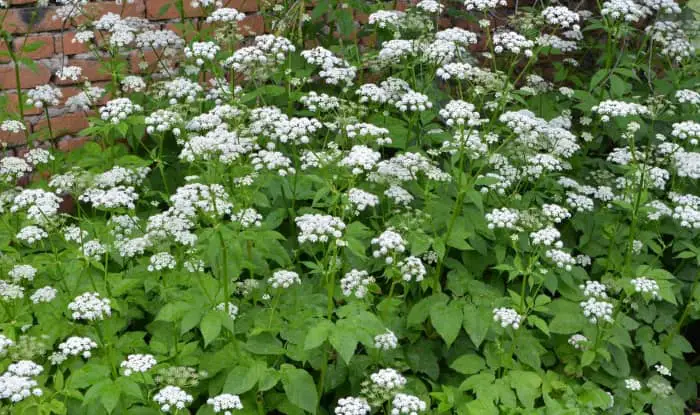
Also called goutweed, ground elder, and herb gerard, bishop’s weed is a perennial native to Europe and Asia. The plant was initially introduced to the United States as a medicinal herb before being planted as an ornamental. But after escaping cultivation, bishop’s weed is now considered invasive in some parts of the US.
Bishop’s weed spreads aggressively through its underground runners. If you leave any pieces of the runners behind when pulling the weed it will grow back, making it very hard to get rid of. As it spreads it forms a thick carpet that displaces other plants.
Bishop’s weed grows to about 3 ft. tall with jagged-edged leaves that grow in three groups of 3 leaflets from the stems. The weed flowers from June to September with clusters of 5 petalled flowers growing in umbels.
Bishop’s weed likes to grow in shaded areas of your garden. You will also find the weed growing in abandoned fields, felled forests, and pastures.
Creeping Charlie (Glechoma hederacea)
Also known as ground ivy, creeping charlie is a fast-spreading broadleaf weed that spreads by runners that creep along the ground rooting at leaf nodes.
The runners grow up to 7 ft. long and spread in all directions from a central taproot, forming a dense mat of stems and leaves that reaches about 1 inch high.
You can also identify creeping charlie by its square stem and green leaves with scalloped edges, The leaves can be round or kidney-shaped and grow in opposite pairs from the stem at leaf nodes.
In the spring creeping charlie blooms, producing small purple flowers.
The weed also spreads through rhizomes and seeds. And if you catch it early in its development it can be worth pulling by hand as the taproot is shallow. But any rhizomes or runners left behind will allow the weed to regrow.
Cinquefoil (Potentilla spp.)
POTENTILLA RECTA
There are more than 300 species of plants commonly known as cinquefoil. The majority of these plants are herbaceous perennial weeds growing in northern hemisphere temperate zones.
Cinquefoil plants are usually recognizable by the single, 5-petalled, yellow flower each plant produces. But some cinquefoil plants have red, white, or pink flowers.
POTENTILLA ANSERINA
Most species of cinquefoil have palmately compound leaves, each leaf consisting of 5 leaflets. Many species have leaves with toothed margins. The leaves grow from long runners (1) that root as they creep along the ground, enabling the weed to spread, and forming a low-growing mat.
Spotted Spurge (Euphorbia maculata)
EUPHORBIA MACULATA BY FOREST AND KIM STARR
Spurge is a fast-growing weed that grows low to the ground and spreads by branched red runners that grow from a deep central taproot.
As spurge grows it forms a dense mat of leaves and stems about 1-2 inches tall. The stems contain a toxic, white milky sap that irritates skin after contact, so be careful when trying to remove the weed.
Spurge is an annual weed that often infests poorly maintained lawns. It enjoys growing in sunny locations with warm soil and struggles in shaded areas.
To help you identify the weed, look for the small, dark green, oppositely growing leaves, often with a dark red spot in the center.
When it blooms, the weed has small white flowers, each with four white petals.
Bermudagrass (Cynodon dactylon)
Bermudagrass is sometimes grown as a turfgrass or used as forage for livestock, but it can also be an invasive weed in some areas.
Bermudagrass is a wiry perennial grass that grows low to the ground and spreads through runners (stolons) above ground and rhizomes underground. Both the runners and rhizomes are capable of rooting in the soil and growing into new plants (2).
The grass leaves are smooth and pointed and have a distinctive ring of hairs where the blade and sheath join. The upright flowering stems have 3-7 spikes of clustered flowers at the terminal ends with small purple to pink flowers.
Quackgrass (Elymus repens)
Quackgrass is also called common couch or couch grass. Quackgrass is a fast-growing perennial grass that can be difficult to get rid of once it becomes established in your garden.
The weed spreads through creeping white runners, underground rhizomes, and seeds, quickly taking over garden beds and invading lawns. Its tall, tufty growth stands out next to most turfgrasses, and it has wider leaves with a rough texture.
The rhizomes form a thick mat as the plant grows and break easily if you try to pull them up. Any pieces left behind can regrow into a new plant.
Self-heal (Prunella vulgaris)
Also called carpenter’s herb, heal-all, and hook-heal, self-heal is a low-growing perennial herb that creeps along the ground via runners that spread in every direction along the soil. It’s a common weed that grows in many parts of North America.
The weed has square stems with green lanceolate leaves growing oppositely. The upper leaf surface is crinkled. Purple flowers grow in spikes at the stem ends.
You’ll often find self-heal growing in the short turf of lawns, roadside verges, and grasslands.
The plant is a medicinal weed that was used traditionally as a cure for various ailments, hence the name.
Fireweed (Chamaenerion angustifolium)
Also called rosebay willowherb and great willowherb, fireweed is a fast-spreading weed that thrives in most environments, dominating large areas as it reproduces by seeds and strong runners.
The aggressive spread makes it a hard weed to control and it’s considered a noxious weed in many parts of the US because fireweed can easily displace native and cultivated plants once it becomes established in an area.
Fireweed is a tall weed with runners that frequently reaches 6 ft. You can recognize the weed by its showy pink flowers in the spring and summer, thick red stems, and lance-shaped leaves. In the fall, the plant develops reddish-brown seed capsules each containing up to 400 wind-dispersed seeds.
Horsetail (Equisetum arvense)
Horsetail is an ancient weed that spreads quickly through underground runners and spores. The aggressive spread forms a dense carpet that displaces native fauna and crowds out desirable plants in your yard.
Horsetail is a herbaceous weed that grows from shoots that emerge from the ground every spring, eventually growing up to 60cm tall. In the winter the weed dies back before emerging again from its underground root system.
Horsetail is easily recognizable by wiry stems and thin needle-like leaves.
Yarrow (Achillea millefolium)
Yarrow is also known as old man’s pepper, devil’s nettle, and soldier’s woundwort. Yarrow is a hardy perennial herb native to Europe and Asia but is now found growing in many parts of the world. It’s common to find yarrow in meadows, pastures, and along roadsides. And some people grow yarrow in gardens as an ornamental plant.
Yarrow typically grows to a height of 1-3 feet with a long, slender, and slightly hairy stem. The leaves are gray-green, feathery, and fern-like. When the weed first emerges, the leaves grow in a basal rosette. As the plant grows, they are arranged in a spiral pattern along the stem, and grow 3-5 inches long.
Yarrow’s small white, yellow, or pale pink flowers grow in flat-topped clusters. Each cluster contains from several to many flowers. The flowers bloom in late spring to early summer and attract pollinators such as bees, butterflies, and moths.
Yarrow is a weed with underground runners. The plant also reproduces through seeds. Once yarrow becomes established in an area, it spreads rapidly, becoming difficult to control. In some parts of the world, yarrow is an invasive plant.
The weed is known for its medicinal properties, with centuries of use in traditional medicine. Yarrow is believed to have anti-inflammatory, astringent, and anti-bacterial properties and has been used to treat many ailments, including wounds, colds, flu, and fever. You can use this herb in teas, tinctures, and as a poultice.
Yarrow has thin, fibrous roots that grow 20 cm deep. Yarrow control is difficult by hand as the weed can re-grow from root fragments that break off as you pull the plant from the ground. Regular cutting or tilling of the soil can be effective in controlling yarrow. Good maintenance around the plant can also reduce the spread of this garden weed.
Slender Speedwell (Veronica filiformis)
Slender speedwell is an evergreen perennial herb native to eastern Europe and western Asia and an introduced species to many parts of the world.
Slender speedwell is a low-growing, creeping weed that typically grows about 6 inches tall with thin, hairy, and usually unbranched stems. The weed spreads by fine runners (stolons) reaching up to 20 inches long, forming a mat and rerooting from nodes. The root system is fibrous.
Small, green, oval to kidney-shaped leaves grow alternately along the stems and are coarsely toothed.
Slender speedwell usually blooms from March-May, producing small, blue-purple flowers with four rounded petals that grow from leaf axils at the end of thin stalks.
Slender speedwell is an invasive weed species in some areas, as it can quickly colonize an area, displacing native plants. It’s a hardy plant that grows in many soil types, including sandy and clay soils, and tolerates different moisture levels. You’ll often find the weed growing in meadows, pastures, and along roadsides. Some gardeners also plant slender speedwell as an ornamental.
To control slender speedwell you can pull or dig the weed up. But the plant can re-grow from root fragments if you leave any behind. After removal, vigorously rake the area to lift the long runners from the ground and dispose of all pieces. Chemical control is also effective, try using a selective herbicide for broadleaf weeds.
White Clover (Trifolium repens)
White clover is a perennial herb native to Europe but now growing in many parts of the world, including North America, Australia, and Asia.
White clover typically grows 6-8 inches tall, with short, hairy stems, usually unbranched. The leaves are trifoliate, which means they’re arranged in groups of three leaflets and are green in color, with a white V-shaped marking on the leaflet.
White clover spreads through runners that creep along the soil, rooting at the nodes and often forming a dense mat.
The plant blooms between May and October, producing small white flowers consisting of many florets in a dense head. Trifolium repens flowers are a popular source of nectar for bees and other pollinators.
White clover is a legume that fixes nitrogen in the soil, making it an excellent plant to improve soil fertility. It finds use as a cover crop in agriculture and food for grazing animals. But white clover can also be an invasive weed with runners that quickly spreads across lawns if left unchecked.
White clover is a hardy plant that tolerates a range of soil conditions, survives in dry and moist environments, and grows well in full sun and partial shade.
White clover is hard to remove by hand, as although most of the root system is shallow, the plant has a deep taproot. It’s easier to control white clover with selective herbicides that won’t harm your grass.
References:
- Creeping Cinquefoil – https://www.rhs.org.uk/weeds/creeping-cinquefoil
- Vegetative Establishment Of Bermudagrass Home Lawns – https://turf.arizona.edu/ccps303.htm
- White Clover Establishment And Management Guide – https://extension.uga.edu/publications/detail.html?number=B1251
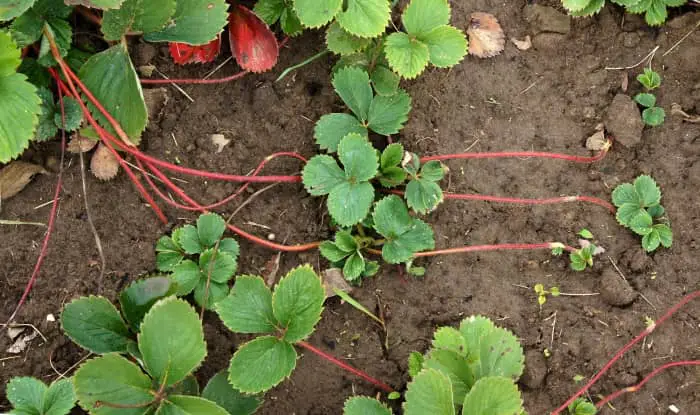
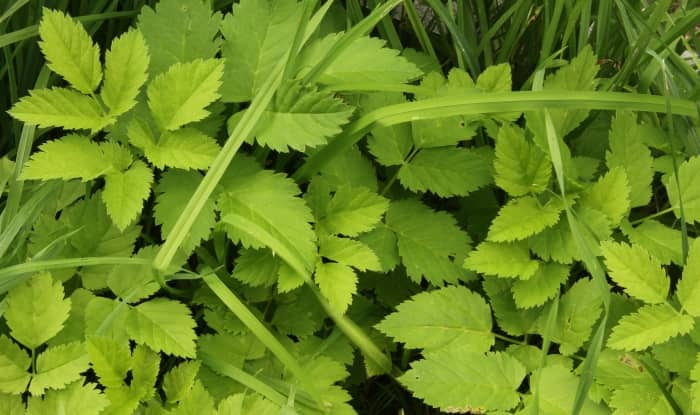
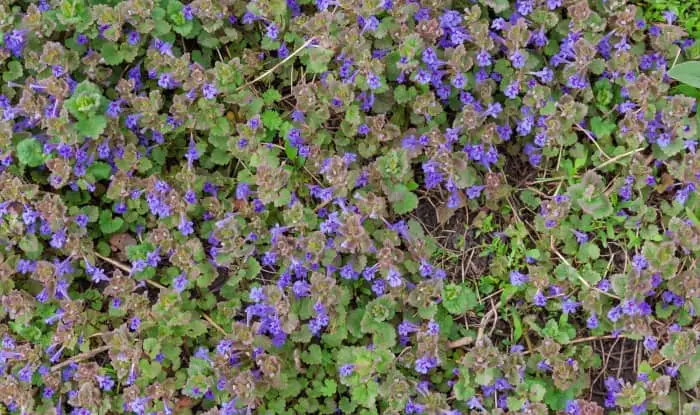
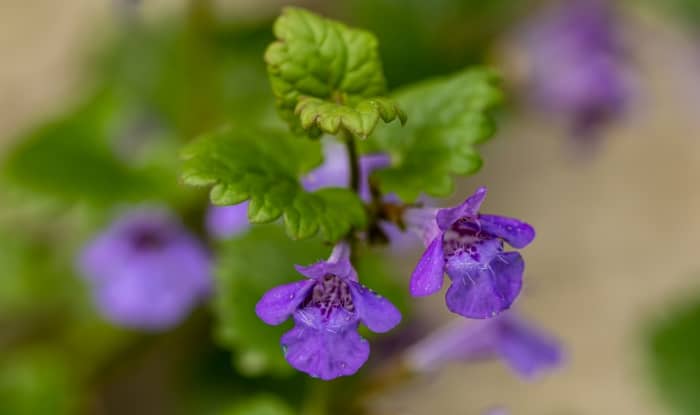

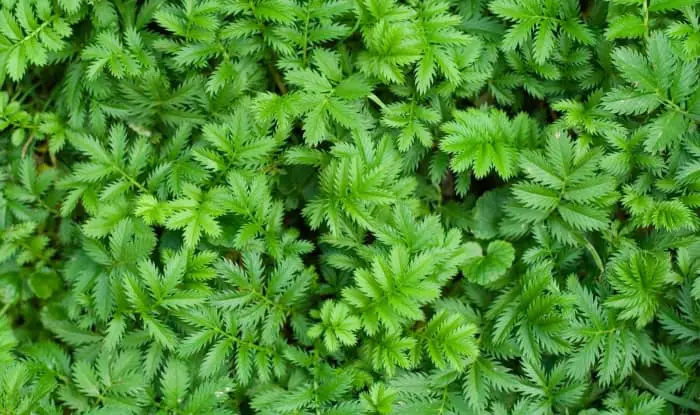
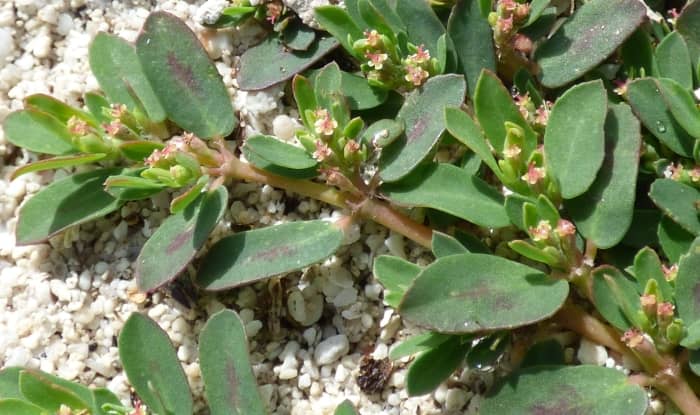
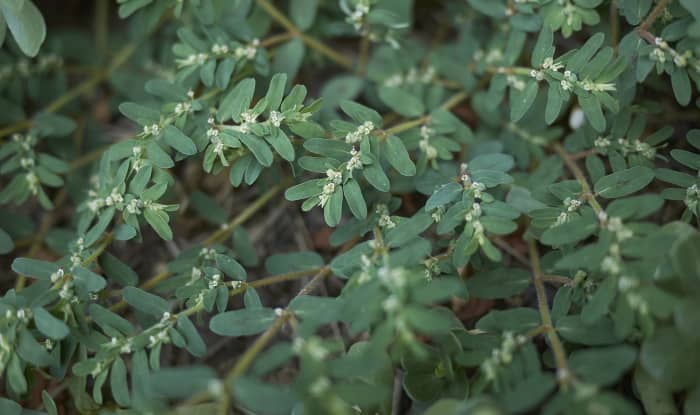
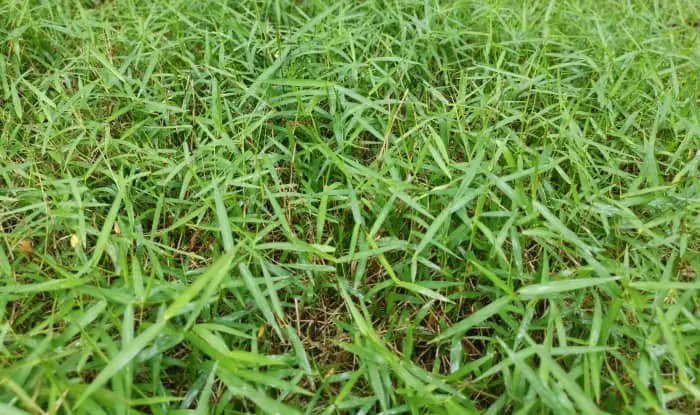
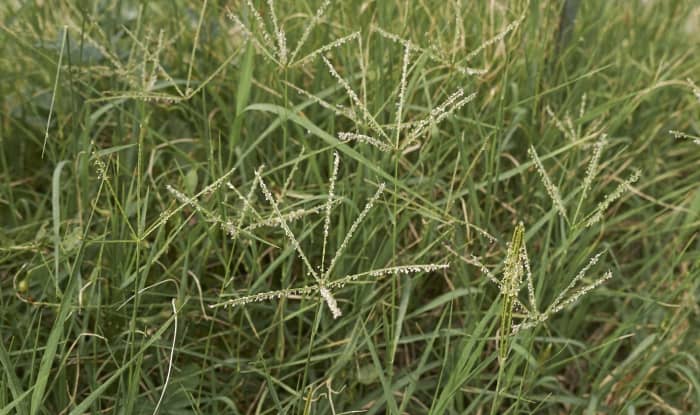

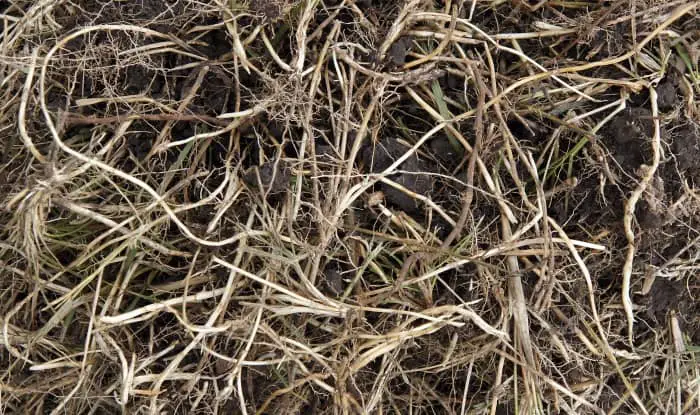
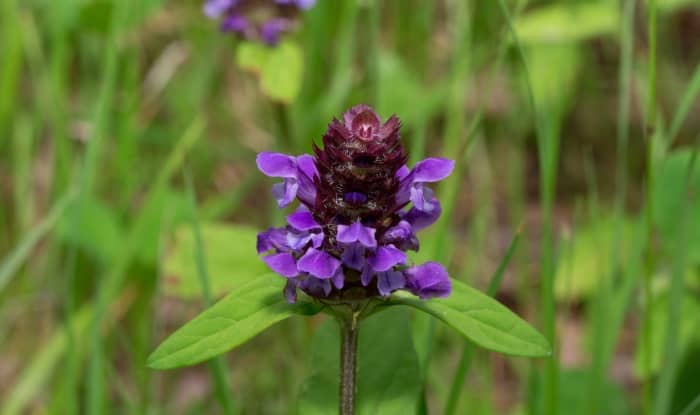
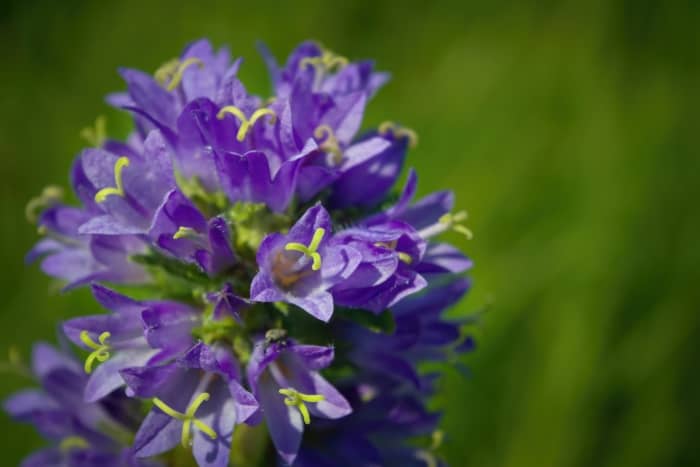
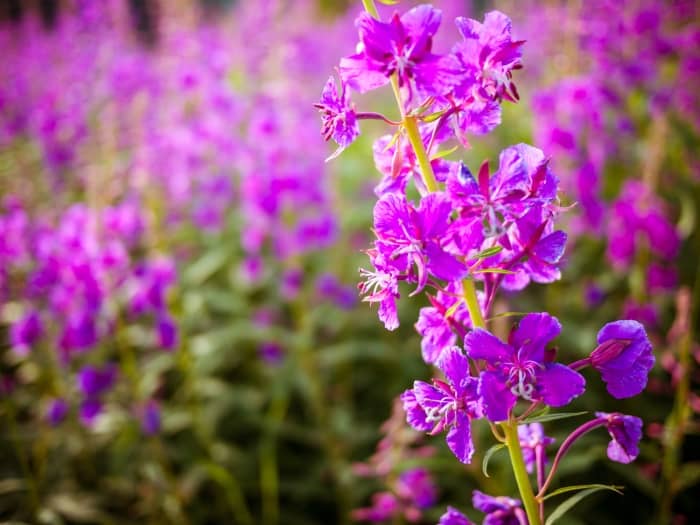
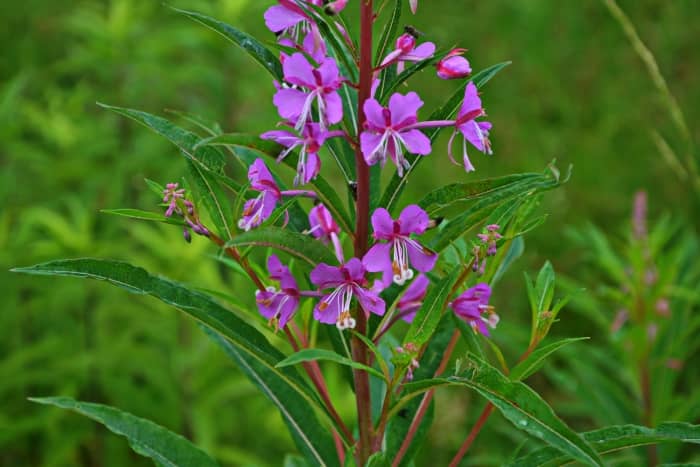
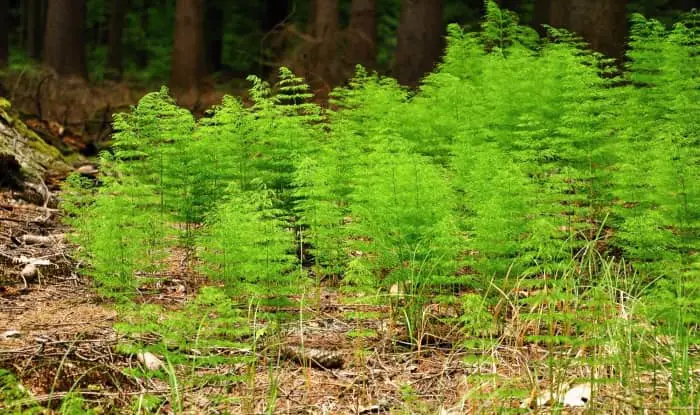
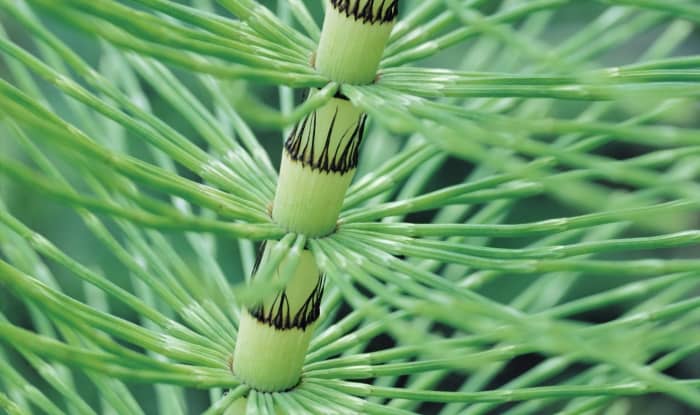

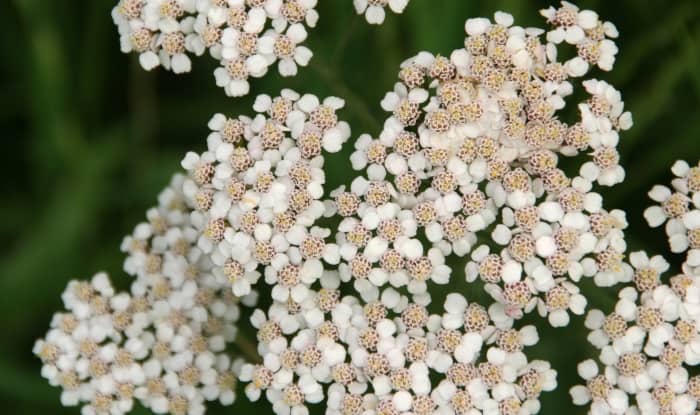
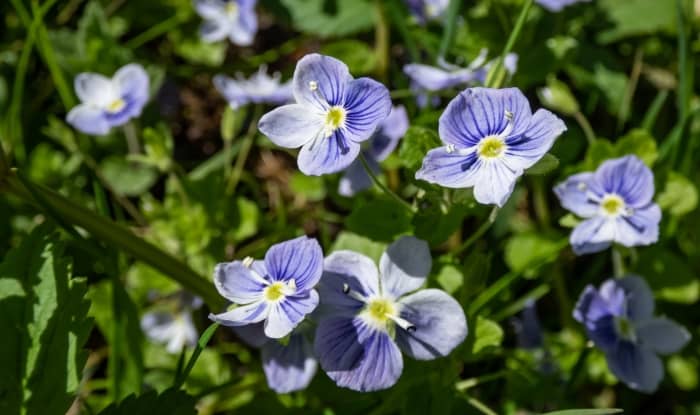
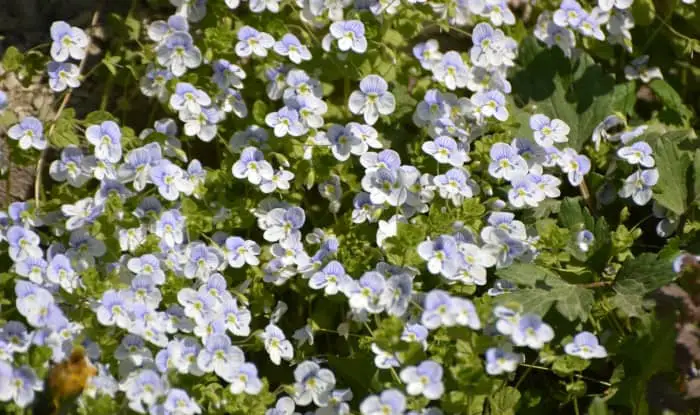
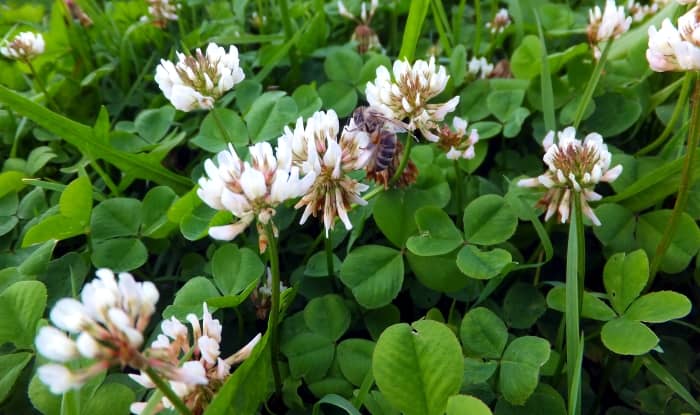
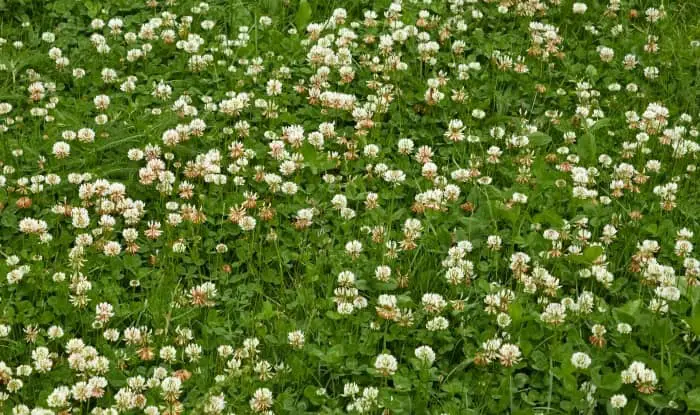
are nutsedge plants in this category?
Nutsedge develops rhizomes that mostly spread under the soil surface, but can sometimes grow as weak runners above ground.